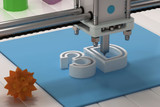Best Computer Screens for Home and Office
Computer display screens, often referred to simply as monitors, have undergone a remarkable evolution since the early days of computing. These screens play a pivotal role in our daily lives, serving as the primary interface between users and the digital world. The journey of display technology has witnessed a constant quest for improved resolution, color accuracy, refresh rates, and design aesthetics.
In the nascent stages of computing, monitors were bulky cathode-ray tube (CRT) displays that consumed considerable desk space. These CRT monitors, with their distinctive curved screens, were the norm for several decades. However, their limitations in terms of size, weight, and power consumption paved the way for the advent of flat-panel displays.
The emergence of liquid crystal display (LCD) technology marked a turning point in the evolution of computer screens. LCD monitors, characterized by their slim profiles and energy efficiency, quickly gained popularity. These displays utilized a matrix of liquid crystal pixels that could be manipulated to control the passage of light, allowing for sharper and more vibrant images. The transition to LCD technology not only revolutionized the form factor of monitors but also contributed to the rise of portable computing devices, such as laptops and tablets.
As technology continued to advance, light-emitting diode (LED) backlighting became a standard feature in LCD monitors. LED backlighting not only enhanced the brightness and color reproduction but also contributed to further energy savings. This development aligned with the growing emphasis on sustainability and energy-efficient design in the tech industry.
The demand for higher resolution displays led to the popularization of high-definition (HD) monitors. High-resolution screens, such as those with 1080p or 4K resolutions, became prevalent, offering users a more immersive and detailed visual experience. The transition to widescreen aspect ratios also became common, catering to the evolving needs of multimedia consumption, gaming, and productivity.
The gaming community, in particular, became a driving force in pushing the boundaries of display technology. Gamers sought monitors with faster refresh rates and lower response times to minimize motion blur and input lag. This demand led to the development of gaming-specific monitors with refresh rates exceeding 144Hz and specialized features like adaptive sync technologies, such as NVIDIA G-Sync and AMD FreeSync, which synchronize the monitor's refresh rate with the graphics card for smoother gameplay.
The rise of organic light-emitting diode (OLED) technology marked another milestone in the world of display screens. OLED monitors offer unparalleled contrast ratios and color reproduction by individually illuminating each pixel. This technology, derived from advancements in television displays, has the potential to revolutionize computer monitors by providing deeper blacks, vibrant colors, and faster response times. However, challenges such as manufacturing costs and potential issues like burn-in have tempered the widespread adoption of OLED monitors.
The concept of curved displays gained traction as manufacturers aimed to deliver a more immersive viewing experience. Curved monitors, designed to mimic the curvature of the human eye, promised to reduce distortion and provide a more natural field of view. These displays found a niche audience, particularly among professionals in fields such as graphic design and video editing, where a curved screen could enhance the visual workflow.
In recent years, the notion of a multi-monitor setup has become commonplace, with users opting for dual or even triple monitor configurations. This trend is fueled by the desire for increased screen real estate and improved multitasking capabilities. Bezel-less designs and ultra-thin monitor borders have further facilitated seamless multi-monitor arrangements, creating a visually striking and practical workspace for users.
The integration of touchscreens into computer monitors has brought about a paradigm shift in user interaction. Touch-enabled displays have become prevalent in devices ranging from all-in-one computers to interactive whiteboards in educational settings. This development has transformed the way users navigate and interact with their digital environment, opening up new possibilities for creative applications and collaborative work.
The future of computer display screens holds exciting prospects, with ongoing research and development focusing on emerging technologies like microLED displays and augmented reality (AR) interfaces. MicroLED displays promise improved brightness, energy efficiency, and lifespan compared to existing technologies. AR interfaces, integrated into transparent displays, aim to overlay digital information onto the real world, revolutionizing fields such as design, education, and healthcare.
In conclusion, the evolution of computer display screens is a testament to the relentless pursuit of innovation and the ever-changing landscape of technology. From the bulky CRT monitors of the past to the sleek and advanced displays of today, each iteration has contributed to a richer and more immersive user experience. As we look ahead, the trajectory of display technology continues to push the boundaries of what is possible, promising even more breathtaking developments in the way we interact with and perceive the digital realm. The journey of computer display screens is a fascinating tapestry of progress, and the canvas is far from complete.
Recent Posts
-
Best Computer Screens for Home and Office
Computer display screens, often referred to simply as monitors, have undergone a remarkable evolutio …27th Dec 2023 -
Unleashing Creativity Down Under: The Best 3D Printing Filament Options in Australia
Australia has become a hub for creativity and innovation, and 3D printing is no exception. With an …3rd Jun 2023 -
How is 3D Printing Technology enhancing the Advertising Industry?
3D printing, or additive manufacturing, is the process of using digital files to create three- dime …8th May 2023

 FREE SHIPPING ON ORDER OVER $75
FREE SHIPPING ON ORDER OVER $75
 LOYALTY PROGRAM
LOYALTY PROGRAM
 SHIPPING WORLDWIDE
SHIPPING WORLDWIDE



